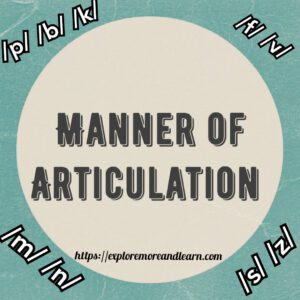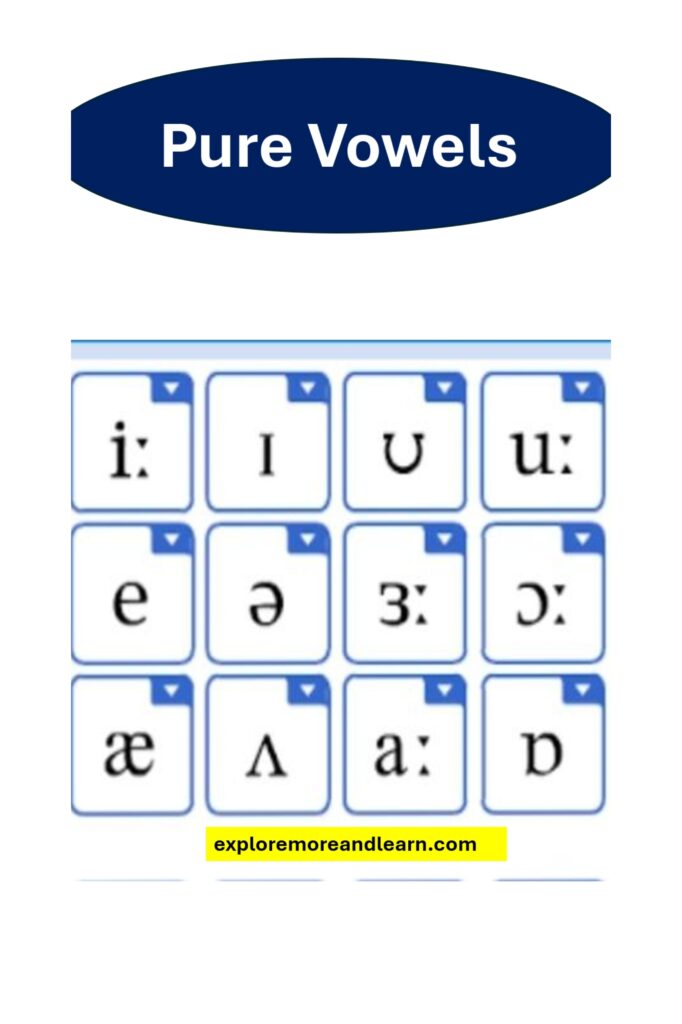
The manner of articulation is the way the airstream is affected as it flows from the lungs and out of the nose and mouth. When we pronounce consonant sounds the airflow is interrupted, diverted or restricted as it passes the oral cavity. The respective modifications that are made to a sound are referred to as their manner of articulation. The manner of articulation, therefore, describes how the different speech organs are involved in producing a consonant sound, basically how the airflow is obstructed. Thus, the manner of articulation is a distinctive feature in the English language.
They can be either voiced or voiceless. Click here to read about voiced and voiceless or unvoiced consonant sounds with their symbols.
According to the manner of articulation, consonants fall into the following groups.
Plosives:
The consonant is produced by stopping the flow of air at some point and suddenly releasing it.
Plosives are pronounced when there is a complete obstruction to the flow of air. They are produced in three stages. The first stage is that a closure occurs. Then the flow of air builds up and finally the closure is released, making an explosion of air that causes a sharp noise. The plosive sounds are:
/p, t, k, b, d, g /
/ p /, / t /, / k / (voiceless) and //b/, /d/, /g/ (voiced).
/ p /- pen, pet
/ t / – tea, turn, jet
/ k / – keen, kite, bike
/ b / – bat, lab
/ d / dear, bed
/ g / – go, gun, bug
Fricatives:
Fricatives are those consonants that are made when you squeeze air through a small hole or gap in your mouth.
/ f, v, θ , ð, s, z, ʃ, ʒ /
/ f / fine, fat
/ v / van, vat
/ θ / thought, thing
/ ð / the, there
/ s / sit, sir
/ z / zero,
/ ʃ / She, sheep
/ ʒ / Casual, pleasure.
Affricates:
A consonant that combines the feature of plosives and fricatives is affricate.
/ tʃ /, / dʒ /
/ tʃ / choice, choose,
/dʒ /- judge, jungle.
Nasal:
In nasal sounds the soft palate is lowered blocking off the oral cavity. Air can only escape through the nose. A consonant produced through the nose with the mouth closed.
/m, n, ŋ /
/ m / – mug, jam.
/ ŋ / -sing, wing
Liquids:
A consonant is produced when the air is blocked but escapes through the sides.
/ l/ / r /
Approximants:
The name approximants refers to the fact that the articulators involved approach each another without actually touching. There are three approximants in the English language: / j / as in yes, /w/ as in work and /r/ as in rose (all voiced). Approximants /w, j / are often referred to as semi-vowels.
Air passes through the articulator to produce the vowel like sounds but the letters are known as consonants.
The sound / j / can confuse you as this symbol is like the letter j but this symbol is for the letter y.
For e.g. it is used for y in yes, yellow etc.
Click here to read about consonant sounds and their symbols.
